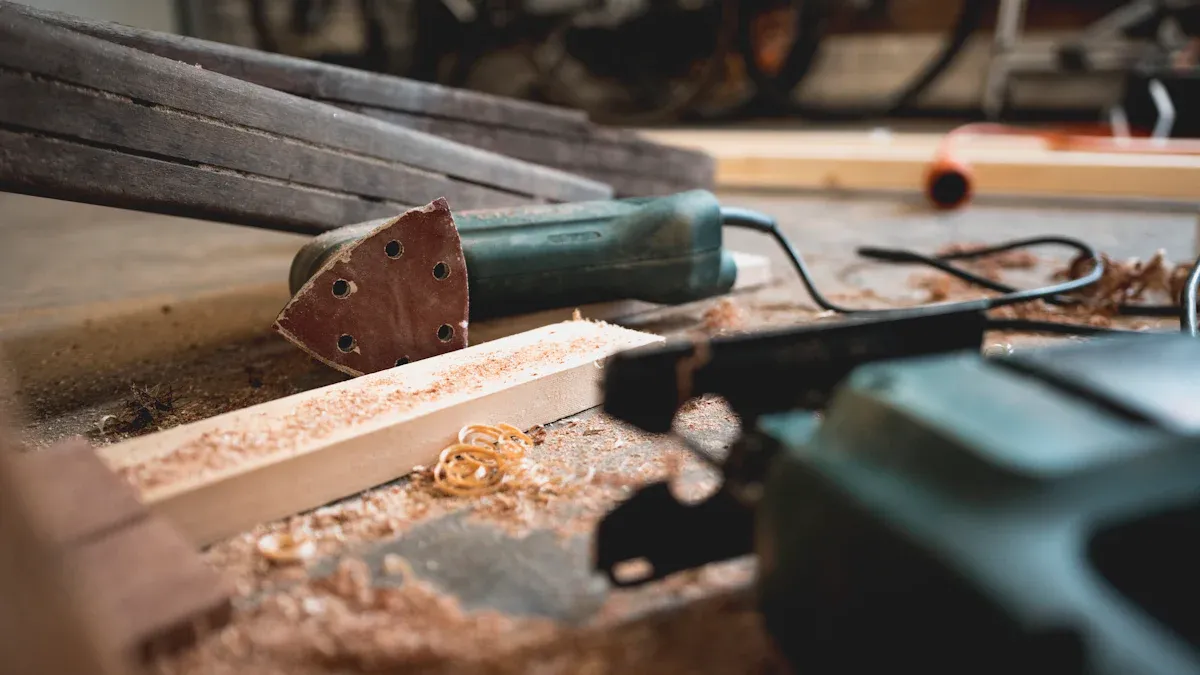
Passivation treatment is essential for enhancing the durability of stainless steel mechanical blades. By creating a protective oxide layer on stainless steel, it effectively safeguards the material from corrosion, even in corrosive environment. Industries such as aerospace, automotive, and medical devices depend on this process to meet their unique requirements.
For instance, aerospace applications require corrosion-resistant turbine blades, while medical devices demand biocompatible and safe surgical tools. Passivation ensures that stainless steel blades perform reliably under corrosive environment, making it a critical process for industries operating in such challenging conditions.
Passivation is a chemical process that enhances the corrosion resistance of stainless steel. During this treatment, the material undergoes an acidic bath, typically using nitric or citric acid. This step removes surface contaminants, such as exogenous iron, and facilitates the formation of a protective chromium oxide layer. This layer acts as a barrier, preventing further oxidation and ensuring long-term durability.
Stainless steel stands out as a material of choice for applications in corrosive environment due to its exceptional properties. Its chromium content enables the formation of a self-generating passivation layer, which protects against corrosive agents like acids, salts, and moisture. Unlike carbon steel, stainless steel does not experience uniform corrosion in wet conditions, making it highly reliable for industries requiring durability.
These properties make stainless steel ideal for manufacturing Industrial blade that operate in corrosive environment. The material's ability to resist salt-water corrosion and its self-repairing passivation layer ensure long-lasting performance. Industries such as food processing and machinery benefit greatly from these attributes, as they demand reliable tools like stainless steel blades to maintain efficiency and safety.

Passivation relies on chemical reactions to create a protective oxide layer on stainless steel surfaces. This process begins with cleaning the surface to remove contaminants like iron particles. The material is then immersed in an acid bath, typically nitric or citric acid, which facilitates the formation of a chromium oxide layer. This layer acts as a barrier, preventing further oxidation and corrosion.
The chemical reactions involved in passivation highlight its scientific foundation:
Oxygen plays a critical role in this process. It reacts with metals to form the oxide layer, leveraging its strong electronegativity and small size to bond effectively. The Pilling-Bedworth ratio determines whether the oxide layer provides adequate protection.

Image Source: pexels
Passivation enhances the corrosion resistance of stainless steel mechanical blades by forming a protective oxide layer on their surface. This layer acts as a barrier, shielding the metal from corrosive agents such as moisture, salts, and acids. Industries operating in strong corrosive environments, such as food processing and machinery, benefit significantly from this treatment. For example, passivation ensures that stainless steel blades used in fish processing remain durable and reliable despite constant exposure to saltwater.
Passivation removes surface contaminants, allowing the chromium in stainless steel to react with oxygen and form a dense, self-repairing oxide layer.
This process extends the lifespan of mechanical blades by preventing rust and oxidation.
By improving corrosion resistance, passivation reduces the risk of blade failure, ensuring consistent performance in demanding conditions.
The passivation process eliminates impurities such as iron particles and other contaminants from the surface of stainless steel. This cleaning step is essential for creating a uniform and smooth finish, which enhances the overall quality of the blades. A clean surface not only improves the appearance of the blades but also ensures better functionality.
In industries like pharmaceuticals and food processing, cleanliness is critical. Passivated blades meet stringent hygiene standards, making them suitable for applications where contamination must be avoided. The removal of impurities also prevents localized corrosion, which can occur when contaminants disrupt the protective oxide layer.
Passivation significantly enhances the durability of mechanical blades by protecting them from environmental damage. The protective oxide layer prevents material degradation, even under extreme conditions. For instance, titanium jet engine blades undergo passivation to resist oxidation at high temperatures. Similarly, stainless steel blades used in machinery maintain their structural integrity in harsh environments.
Investing in passivation leads to long-term cost savings. By extending the lifespan of blades, this process minimizes the need for frequent replacements and repairs. Industries also benefit from reduced maintenance costs, as passivated blades require less frequent cleaning and upkeep. Improved durability ensures that mechanical blades perform efficiently over time, reducing downtime and operational disruptions.
Passivation extends the lifespan of stainless steel components, lowering maintenance expenses.
Enhanced cleanliness reduces the frequency of maintenance activities, saving time and resources.